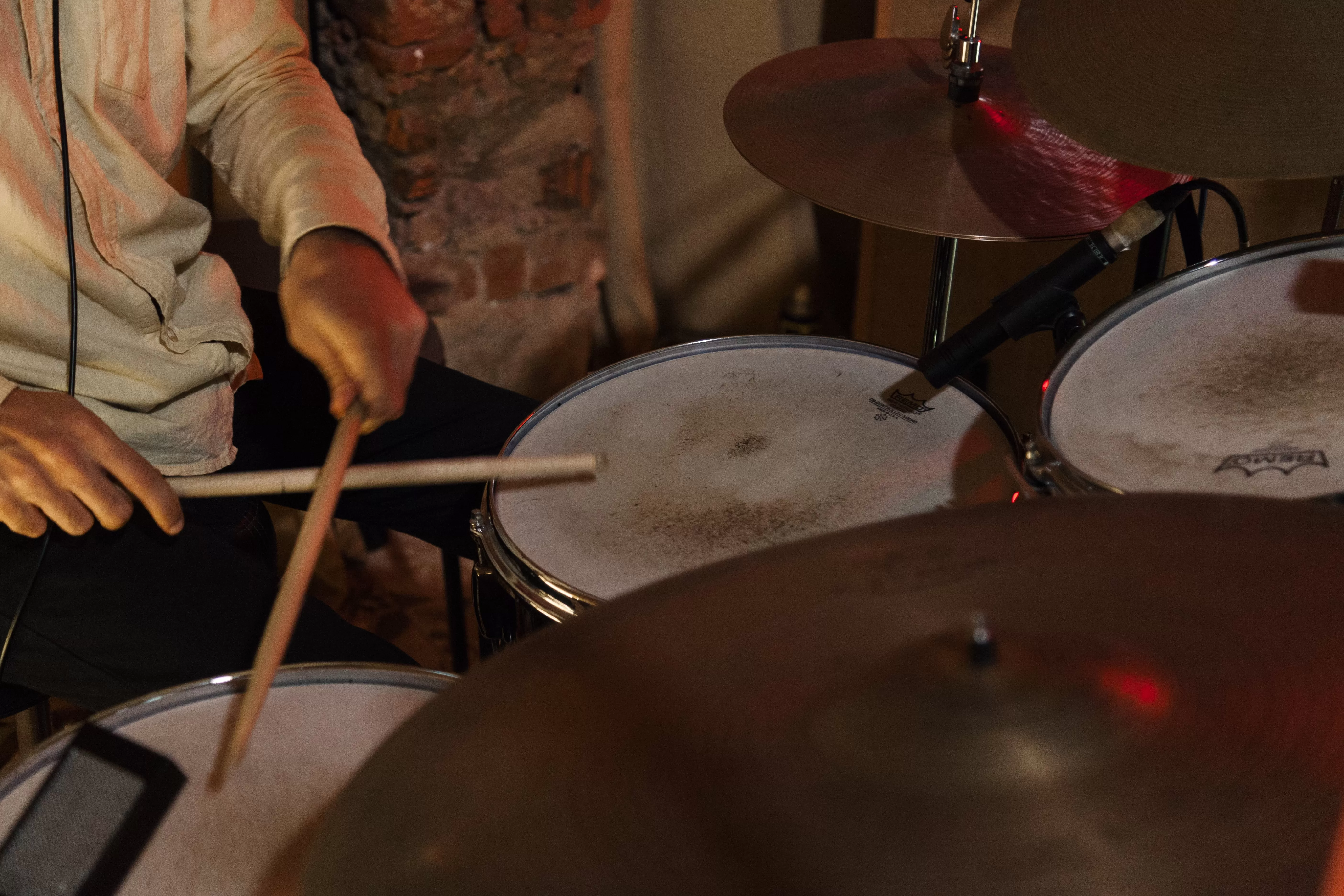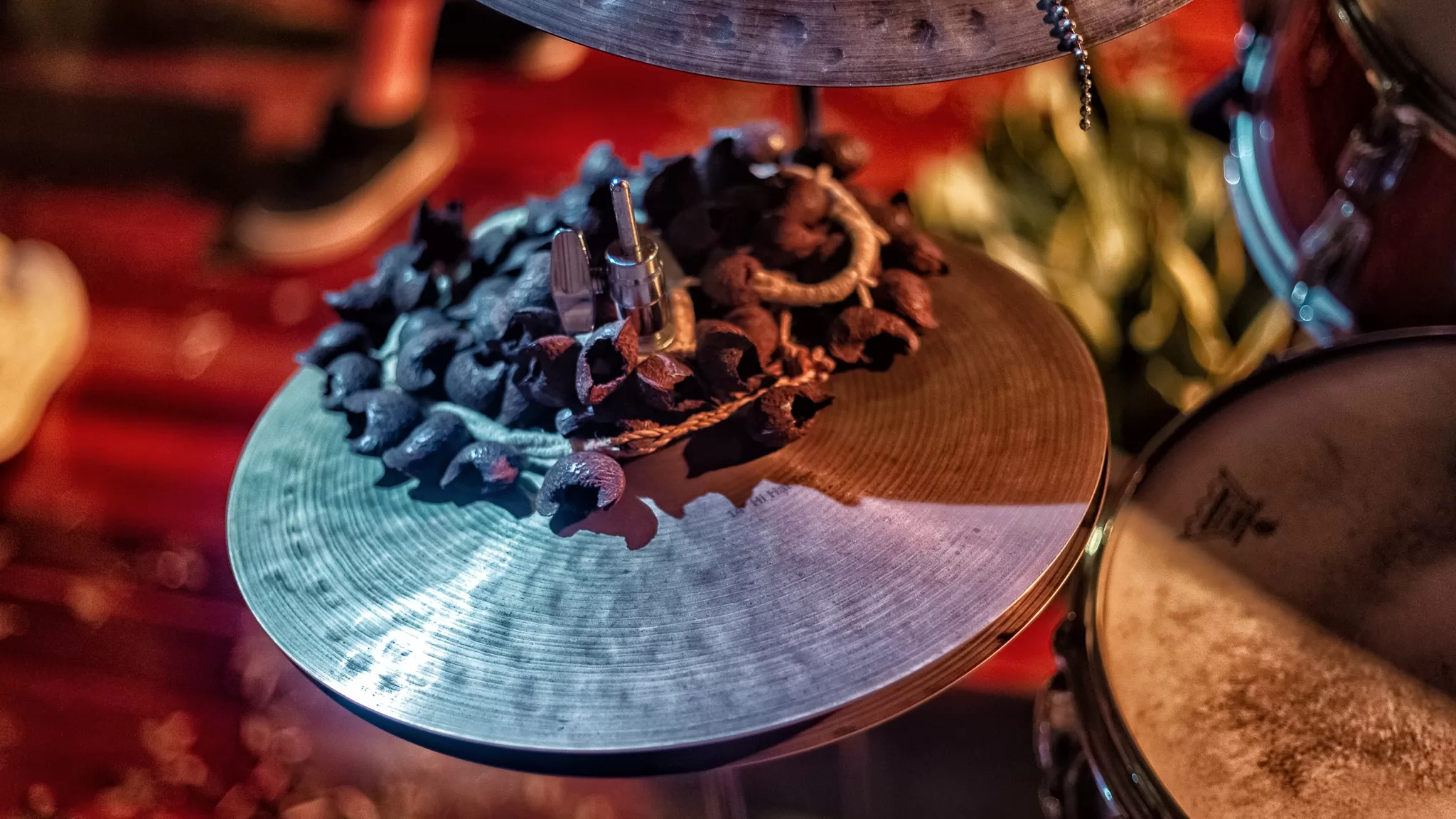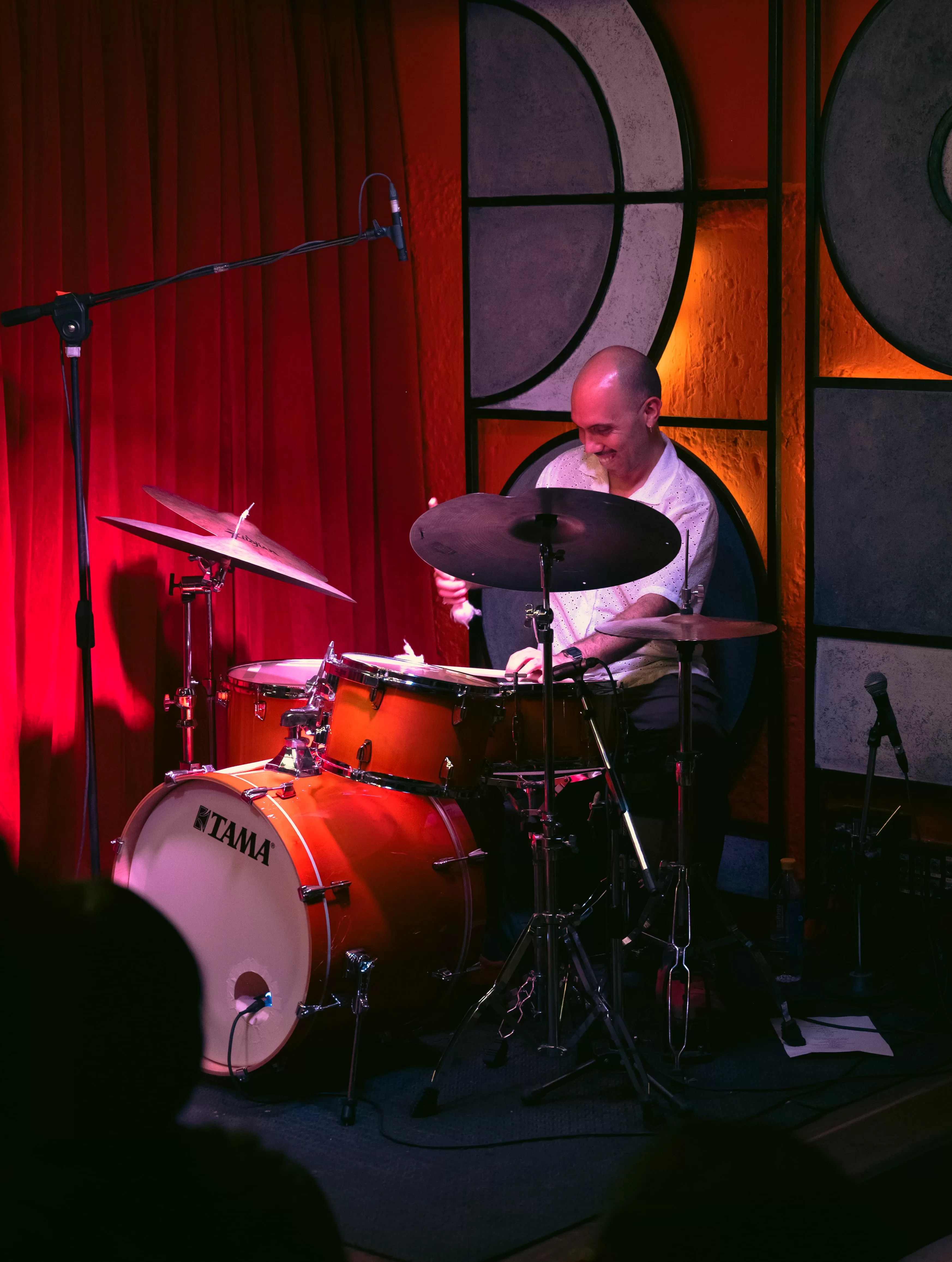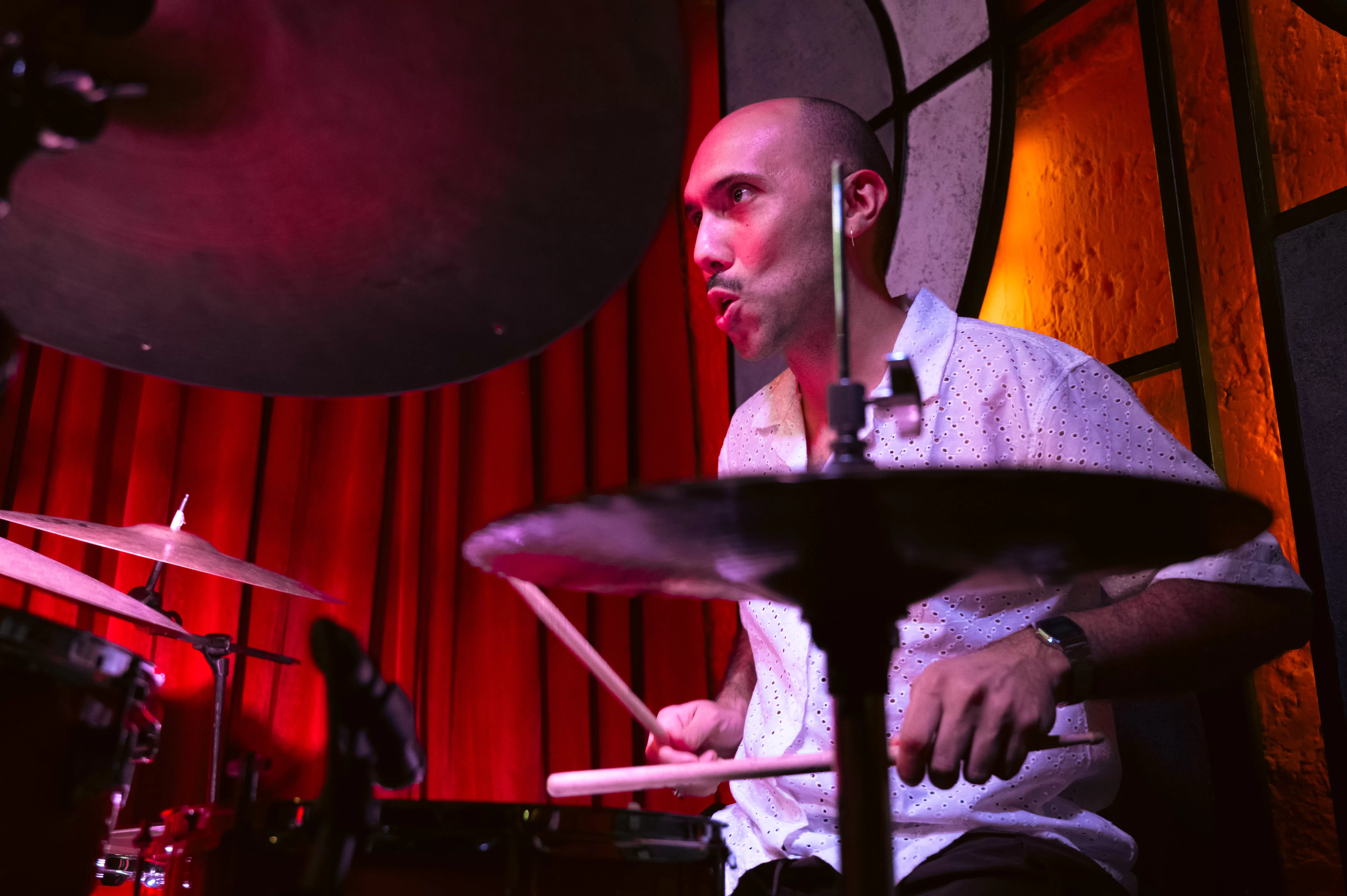The Drum: A Storyteller and Generator of Life
Written by Lucas Fixel
In the Afroamerindiginous-Brazilian ancestral traditions, the drum is much more than just a musical instrument – it is a true storyteller and messenger of the cosmogonies that coexist in Brazil. It brings life and rhythm to the vastness of narratives and cultures. However, I suspect that something similar happens in other parts of the world as well. You don’t need to look far to see this: just look around, 100 meters away from where you are, and you’ll likely find something that resonates with this idea.
This reflection leads me to a provocation: if the drum has a voice, why don’t we always hear it? Why do we get so impressed with techniques, able to describe them easily, but when something truly moving happens on stage, it is almost indescribable? Why is the search for the “best instrument” so strong, knowing that sometimes it’s someone tapping on a dinner table that can make us cry?
Just like in the traditions of my land, I teach my drum to speak. I take care of it, I revere the instrument, and I am grateful for the opportunity to share life with it as we tell stories around the world.
You might be thinking, “This is all very beautiful, but how does this work in practice?” Well, nothing I’m going to share here was invented by me, nor is it something recent. These are ancient practices, and perhaps I’m only bringing them to you from my perspective. But they aren’t the only ones. Remember the exercise of the 100 meters? It is the starting point, the first step to integrating music into your daily life.

Exercise 1: Observe What’s Around You
Ask yourself every day: what is happening around me in the 100 meters surrounding me? What pedagogies and methods emerge? To be an artist, it’s essential to observe, feel, and reflect.
Every musical material has a story. Nothing comes from nothing. If you imagine an infinite spiral of events, you’ll see that they don’t collide, but rather intersect, hitting the same angles and forming what we call a cycle. And cycles are everywhere, just like rhythm.

Exercise 2: More Than the Sound
Learn at least one thing beyond the sonic shape (I prefer the word “shape,” instead of “pattern,” to describe music). Ask yourself questions like: Who is playing? What is her name? Where does she come from? What is the place she comes from like? What is the history of that place? How does she produce sound with the instrument? How is the drum tuned?
These questions are endless. You’ll notice that the grooves, which once seemed simple, now gain nuances beyond just the sonic material. I use the term “sonic material” to refer to sound because words like “music,” “rhythm,” and “harmony” carry much more than just sound.

Exercise 3: Teach Your Drum to Speak
Now that you and your drum are connected, it’s time to teach it to speak. Just like we learn our cosmogonies as children through stories told by our family – whether for bedtime or in daily life, through words, gestures, memories, and expressions – your drum also needs narratives to express itself.
One way to do this is:
- Choose a narrative. It could be something from your life, a book you’ve read, an ancestral story, or even a feeling you’re experiencing in the moment. Connect deeply with the story and allow it to affect you. When you’re ready, start playing, but don’t just think of “producing sound.” Play in a broader sense, like you would touch a fruit or a ball – without defined patterns, full of irregularities and instabilities. The idea of “error” disappears in this process, because “error” only inhibits the drum’s learning. You begin to create new ways of playing and explore sounds you’ve never tried, freeing yourself from the pressure of getting it “right” and simply telling a story.
- Now, let’s help the drum name what it feels. If the story begins serenely, for example, what brings you serenity when you’re playing? What does serenity sound like? Try describing that feeling and then apply it to the drum: which part of the drum or cymbals do you find that sound in? Is it dry, velvety, sharp, full of harmonics?
Do this exercise every day for a few minutes, and your drum will begin to learn to express what it feels.
- To tell a story, more layers are needed. Your drum needs to speak! How do you teach it to do that? Just like when we learn to say our first words, you need to teach your drum to speak. Now that you’re connected, you can start copying, observing around you, and imitating what you see and hear. How?
Through friends, shows, workshops, albums, videos, theater, dance, and much more. Start now: choose a groove you want to learn, listen to it enough to be able to sing it, dance it, feel the pulse and subdivision, and keep singing.
Identify the parts of the instrument being played, recognize what each part of your body is doing, how the subdivision is being played, where the accents are placed. Play the parts separately and then add layers without losing the groove.
But be careful: everything we learn in life has meaning, expressiveness, and is connected to our feelings. Teaching only the sonic form to the drum might seem like a shortcut, but it would turn your drum into a soulless imitator, without life.
Final Exercise: The Journey of a Lifetime
The last exercise for a lifetime: with every song you and your drum play, ask everything. Just like when we meet someone new who intrigues us, take a deep interest in the songs. If you’ve been accompanying your drum throughout life, it will bring all these layers into your art, and over time, you’ll discover so much more.

About Lucas:
Lucas is a drummer, composer, and music producer from Rio de Janeiro whose work is rooted in Afro-Indigenous traditions and rich rhythmic storytelling. His musical journey began in the Protestant church, symphonic bands, samba groups, and traditional Brazilian music.
At 17, Lucas moved to Spain to study jazz performance at SPJ, collaborating with global artists like Roman Filiu, Célia Mur, Paco Charlin, and Logan Richardson. After returning to Brazil, he earned a degree in musical arrangement from UNIRIO and joined a jazz and rock exchange program at Örebro University in Sweden.
Currently, Lucas performs with multiple artists, works as a producer and music director, and is celebrated for his original work Entorno(a)—a project showcasing his passion for improvisation and genre-blending creativity. We’re thrilled to have Lucas as faculty at Global Music Institute!